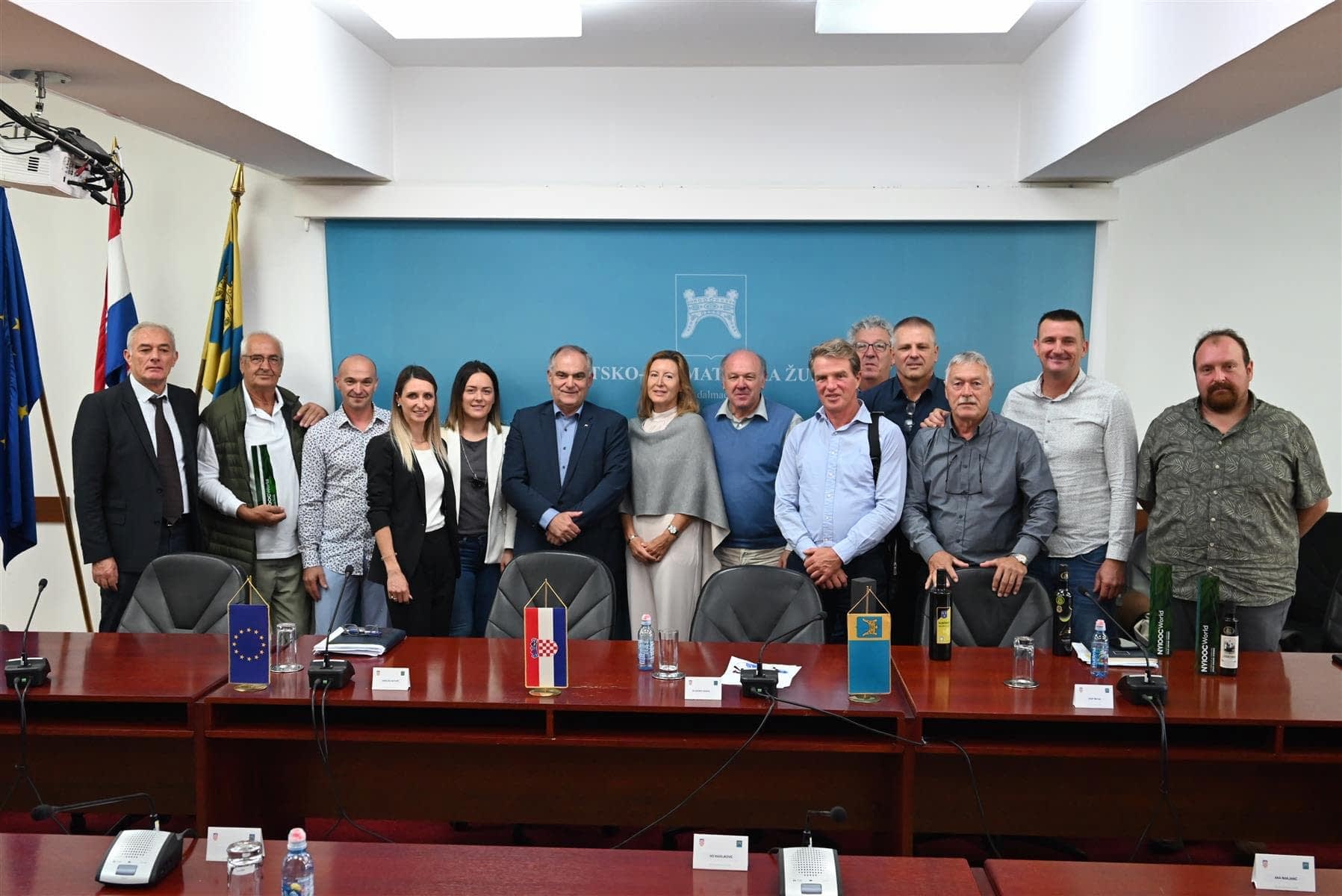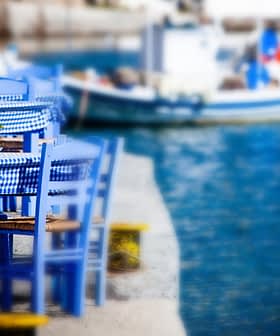With the start of this year’s olive harvest in Split, the largest city in Dalmatia and the second largest in Croatia after Zagreb, a ceremony was held to honor local winners of the 2022 NYIOOC World Olive Oil Competition.
Blaženko Boban, the prefect of Split-Dalmatia County, and Anđelko Katavić, head of economy and agriculture, welcomed the award-winning growers and millers to the local capitol.
See Also: Croatia’s Zadar County Celebrates NYIOOC Success in Official CeremonyCroatians earned a combined 96 awards at the 2022 edition of the world’s largest olive oil quality competition. Producers from Split-Dalmatia County, Croatia’s most significant olive-growing subregion, earned 10 Gold Awards and seven Silver Awards.

Anđelko Katavić, head of economy and agriculture (left), Blaženko Boban, the prefect of Split-Dalmatia County and Ivica Ljubenkov, president of the Association of Olive Growers and Oil Producers of Croatia
“The success of our olive growers brings us together, not only in Split-Dalmatia County but also in the local communities from which the olive growers come and in Croatia,” Boban said.
“We can’t take a big step forward right away, but we can take a lot of small steps, such as organizing organic olive cultivation through co-financing the shipment of samples to future competitions,” he added.
Ivica Ljubenkov, president of the Association of Olive Growers and Oil Producers of Croatia, expressed his satisfaction with the reception and the meeting.

“We reached concrete conclusions and agreed on future actions and further communication,” Ljubenkov said. He also praised the success of all Croatian producers at the NYIOOC.
In 2022, the competition received 1,244 samples from 28 countries. Croatian extra virgin olive oils earned the third-highest award tally behind Italy and Spain.
See Also:The Best Olive Oils from CroatiaSplit-Dalmatia County is home to 2 million olive trees, about 40 percent of the country’s total. The island of Brač alone hosts about 1 million of them.

Officials congratulated the regions award-winning producers in the capital.
The county stretches about 120 kilometers from end to end and includes the islands of Drvenik, Čiovo, Brač, Hvar and Šolta. Oblica is the main variety, followed by Drobinka, Levantika, Lastovka and Sitnica.
Despite the drought and scorching summer temperatures, which reached an average of 40 ºC, the harvest is expected to be solid this year.
The first autumn rains across Croatia improved the development of the fruits and increased the amount of oil in them. Furthermore, there were no pests or diseases, and many producers expect high-quality yields.








